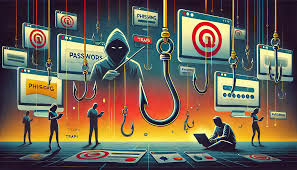In a troubling development for consumers, Indian loan company Vivifi has reportedly fallen victim to a significant data breach. The incident has raised alarms as a staggering 36 million files were left exposed online, primarily containing sensitive personally identifiable information (PII).
Image may be NSFW.
Clik here to view.
This exposure stems from a misconfigured Amazon AWS S3 bucket that was left unsecured and accessible without any authentication measures. Cybernews researchers uncovered the alarming vulnerability, revealing that the compromised files included critical Know Your Customer (KYC) documents.
The implications of this breach are severe. With such a wealth of personal data at their fingertips, cybercriminals now have an easier path to commit identity theft. They could potentially use the stolen information to fraudulently apply for credit cards, loans, or bank accounts, putting countless individuals at risk.
For a digital lending app like Vivifi, which relies heavily on trust and security, this incident not only jeopardizes customer safety but also tarnishes its reputation in the competitive financial landscape. As investigations continue, customers are left to wonder how such a lapse could occur and what measures will be taken to rectify the situation.
Image may be NSFW.
Clik here to view.
The recent data leak has raised significant concerns among individuals and institutions alike. Among the compromised information were sensitive documents, including passports, ID cards, driving licenses, utility bills, bank statements, and loan agreement letters. This comprehensive trove of personal data poses serious risks for those affected.
The alarming discovery of the leak was made on November 28, 2024. Researchers uncovered that the vulnerable data bucket remained open until January 16, 2025. This prolonged exposure gave potential cybercriminals over a month to exploit the situation. Fortunately, there is currently no evidence to indicate that any unauthorized individuals accessed the data during this time. However, only a thorough internal forensic audit can provide definitive answers.
Image may be NSFW.
Clik here to view.
The leaked documents primarily included Know Your Customer (KYC) materials, which financial institutions rely on to verify identity, address, and income. This kind of information is particularly valuable to cybercriminals. With it, they could potentially secure loans in a victim’s name or devise sophisticated social engineering schemes.
For instance, attackers could impersonate victims convincingly, using detailed personal information to manipulate financial institutions into granting access to accounts or funds. The implications of such breaches are dire, leaving victims vulnerable to identity theft and financial fraud. As the investigation unfolds, the need for stringent cybersecurity measures becomes increasingly clear.
In today’s digital landscape, data breaches have become alarmingly frequent, leaving individuals vulnerable to various forms of exploitation. According to researchers from Cybernews, attackers can leverage leaked information from loan agreements or banking details to craft deceptive requests for urgent payments or account verifications. This manipulation can create a sense of panic, prompting victims to act hastily without verifying the legitimacy of the requests.
Image may be NSFW.
Clik here to view.
The ramifications don’t stop there. Personal details that are exposed in these breaches can be aggregated and sold on the dark web, where cybercriminals thrive. This black market for sensitive information complicates matters for victims, making it increasingly difficult to safeguard their privacy and secure their identities against further threats.
Fintech companies, often seen as modern financial solutions, are not immune to these risks. Earlier in 2025, for instance, the Mexican fintech firm Miio faced a significant data breach that exposed millions of sensitive files. While the scale of this breach was notably smaller than that of the Vivifi incident, it nonetheless posed serious risks to countless customers, amplifying fears about the security of personal data in the financial sector.
As these incidents continue to unfold, the need for robust security measures and consumer vigilance becomes ever more critical. The threat is real, and the stakes are high.
In the shadowy world of cybercrime, a new threat looms large. A recent data breach has unveiled a treasure trove of sensitive information, creating a perfect storm for attackers. Among the stolen assets are Know Your Customer (KYC) documents, which hold the keys to an individual’s identity.
For cybercriminals, these documents are not just pieces of paper; they are powerful tools that can unlock numerous doors. With access to personally identifiable information (PII), such as names, addresses, and social security numbers, the potential for identity theft grows exponentially.
Image may be NSFW.
Clik here to view.
Imagine receiving a notice from your bank about a loan you never applied for or a credit card bill for purchases you didn’t make. This is the chilling reality that victims may soon face. Attackers can easily use your identity to secure loans, open credit accounts, or even establish new bank accounts in your name.
The consequences can be devastating, leading to financial ruin and a long, arduous process to reclaim one’s identity. As the dust settles on this breach, customers must remain vigilant, watching for signs of misuse and taking proactive steps to protect themselves from becoming unwitting victims in this digital age.
In a world where the threat of identity theft looms larger than ever, safeguarding oneself requires vigilance and a proactive approach to monitoring your financial accounts. The best way to navigate this treacherous landscape is to remain alert, keeping a close watch on your transactions and personal information. For those who prefer a more hands-off method, there are various identity theft protection plans available, tailored for individuals and families alike. These plans take on the burden of surveillance for you, often offering robust insurance coverage—sometimes exceeding $1 million—as well as services like dark web monitoring and anti-malware tools. Such services can be complex and daunting to set up independently.
Image may be NSFW.
Clik here to view.
However, if you’re inclined to take matters into your own hands—perhaps you haven’t experienced a breach firsthand but still wish to fortify your defenses—there are several crucial aspects to keep in mind.
Start with your bank statements and account activity. Regularly reviewing these records can help you spot any irregularities. Should anything raise a red flag, it’s essential to contact your bank without delay. Freezing or pausing your card can be a quick way to prevent potential damage.
Next, consider the passwords protecting your accounts. Each one should be strong and unique, especially for those tied to financial, health, or other sensitive information. If you learn that any service you utilize has fallen victim to a cyberattack or data breach, change your password immediately to safeguard against unauthorized access.
Finally, while it may seem like an inconvenience, enabling multi-factor authentication (MFA) is an invaluable step in creating an additional layer of security. For accounts containing sensitive data, this measure is not just recommended—it’s imperative. By taking these precautions, you can better shield yourself from the shadows lurking in the digital realm.
In the digital age, the leakage of Personally Identifiable Information (PII) poses a grave risk, opening the door to a host of malicious activities. One of the most insidious threats that arise from such breaches is social engineering, particularly in the form of phishing attacks. These cybercriminals are adept at exploiting the data obtained during a breach, using it to craft personalized approaches that can seem remarkably convincing. They might glean information about the services you frequently use, your hobbies and interests, or even details about your closest friends and family members.
Image may be NSFW.
Clik here to view.
Picture this scenario: an attacker, having gathered enough intel from a recent data breach, decides to strike. They create an email that appears to be from one of your trusted contacts or a service you regularly utilize. The message might include a sense of urgency or an enticing offer, designed to coax you into action. As you read through it, the familiarity of the sender’s name could lull you into a false sense of security. Before you know it, you find yourself hovering over a link that promises something too good to be true or scanning a QR code that seems harmless enough.
This is where vigilance becomes paramount. It’s essential to stay alert for any unsolicited communications that land in your inbox. Take a moment to scrutinize the sender’s email address; does it look legitimate? If there’s any doubt in your mind, resist the temptation to click on any links. Instead, take the prudent step of looking up the official email address through a reliable source or reaching out directly to the company using contact details found on their official website.
It’s crucial to remember that legitimate institutions, like your bank, will never request sensitive information such as your account details via phone calls or emails. They also won’t pressure you to transfer funds to another account under any circumstance. By maintaining a cautious approach and staying informed, you can protect yourself from falling victim to these deceptive schemes that prey on unsuspecting individuals.
Image may be NSFW.
Clik here to view.
Maxthon: Your Trustworthy Companion on the Digital Expedition
In an era where our everyday lives are intricately woven into the fabric of the online universe, safeguarding our digital personas has never been more crucial. Picture yourself setting off on a thrilling expedition through the expansive and largely unexplored territories of the internet, where every click reveals a trove of information and exhilarating experiences. Yet, within this vast cyber expanse, unseen perils lurk that threaten your personal data and overall security. To traverse this complex web with assurance, choosing a browser that places your safety at the forefront is vital. This is where Maxthon Browser steps in—your steadfast companion on this quest, and the best part? It’s completely free.
Image may be NSFW.
Clik here to view.
Maxthon Browser: The Ultimate Selection for Windows 11 Users
Why Maxthon Stands Out on Windows 11
What sets Maxthon apart from conventional web browsers is its unwavering commitment to protecting your online privacy. Imagine it as a watchful guardian, tirelessly scanning for the myriad threats that hide within the digital wilderness. Armed with a remarkable suite of integrated features—including ad-blockers and anti-tracking capabilities—Maxthon works diligently to shield your online identity. As you embark on your internet adventures on a Windows 11 device, these protective tools form a formidable barrier against intrusive advertisements and prevent websites from monitoring your browsing behavior.
The Ideal Fusion of Maxthon and Windows 11
As you navigate the rich tapestry of the digital realm on your Windows 11 device, Maxthon’s dedication to ensuring your privacy becomes increasingly evident. By employing cutting-edge encryption techniques, it fortifies your sensitive data during your online explorations. This guarantees that as you chart your course through the uncharted expanses of cyberspace, you can pursue your digital escapades with confidence, secure in the knowledge that your information remains shielded from unwelcome eyes.
In this journey of discovery, let Maxthon be your trusted guide, lighting the way through the dark corners of the internet while keeping your digital presence safe and sound.
The post How A Security Slip-Up Put Millions At Risk appeared first on Maxthon | Privacy Private Browser.